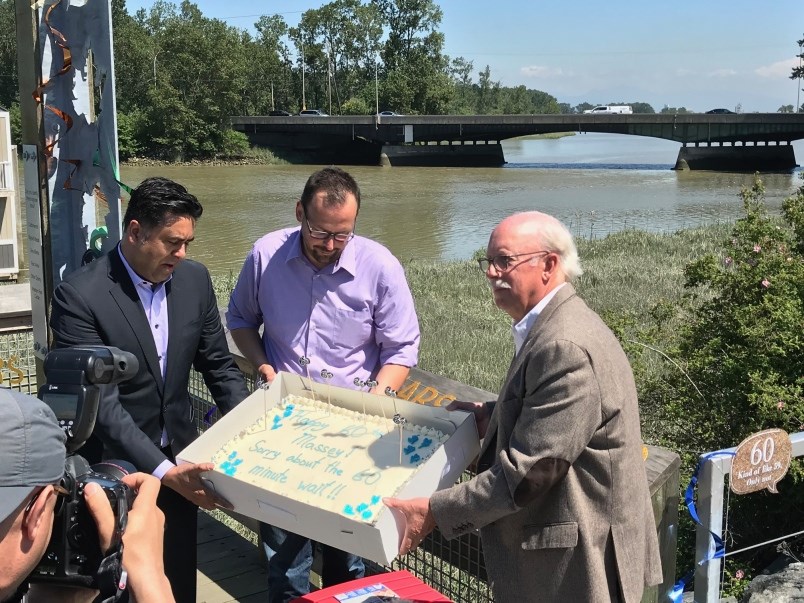Whether it’s a bridge or a tunnel, Richmond-Queensborough Liberal MLA Jas Johal just wants the province to get moving on replacing the George Massey Tunnel.
The bottlenecked link between Richmond and Delta is currently being studied by the NDP provincial government to determine the best option to replace it. Engineering reports are expected this fall and a business case in the fall of 2020.
However, according to Johal, it seems that the project is back to “square one” after the cancellation of the previous government’s 10-lane bridge project, which included five years of consultation, preparation work that cost between $80 and $100 million and an estimated price tag of $3.5 billion. Not only did the plan include capacity for rapid transit, it also included $500 million in transit improvements, Johal added.
“Residents are just frustrated, they want this thing dealt with,” Johal said. “If you can prove that a tunnel can carry the same capacity in regard to transit and vehicles, so be it. But I just want something to move forward, and I think that’s where the public’s at right now — the public and businesses.”
Johal said he hears from his constituents about the frustrations they’re feeling with the constant traffic jams, and he’s worried about businesses leaving Richmond because they can’t retain employees.
Johal recently joined Ian Paton, the Liberal MLA for Delta South, and Jordan Bateman, the spokesperson for Independent Contractors and Businesses, for a photo opportunity and 60th birthday anniversary of the tunnel, with a cake that read “Sorry about the 60-minute wait!!”
The 10-lane bridge project proposed by the previous government would have been one-third completed by now, Johal said, but the timeline being projected now to replace the tunnel is 2025 or 2026.
He said he is also concerned there’s no money allocated in the three-year budget for the replacement of the tunnel.
However, the Ministry of Transportation and Infrastructure explained, in a background statement, that the next step, after engineering reports in the fall, is a detailed business case so it can go to the Treasury Board for capital funding with the potential for federal funding.
Metro Vancouver has struck a tunnel replacement task force which includes mayors from the region, including Richmond Mayor Malcolm Brodie, and First Nations chiefs.
The mayors and chiefs came out with a statement earlier this year, before the task force was struck, saying they all feel twinning the tunnel is the best option.
While several regional politicians were opposed to the size of the previously proposed, 10-lane bridge project, Johal said “you build a major piece of infrastructure like that for the city 50 years from now, you don’t necessarily do it to placate politicians today.”
In the legislature last week, the leader of the opposition, Andrew Wilkinson, pressed Premier John Horgan on comments he made to the media about the regional mayors agreeing on a solution to the tunnel, namely, to twin it with another tunnel rather than a bridge, implying it was a foregone conclusion.
Wilkinson asked him whether the $2 million contract to study options for the tunnel replacement was a “pointless exercise at public expense.” Horgan’s response was to clarify that the unanimity among the local mayors was “very good news.”
But he did say, when further pressed by Wilkinson on whether he would accept a bridge to replace the tunnel, that “If there’s a better idea than that (a tunnel) and it will receive unanimity, I’ll accept that as well.”
Responding to a request to speak to Claire Trevena, the Minister of Transportation and Infrastructure, the Richmond News received an emailed statement acknowledging that people are “tired of being stuck in traffic,” which is why the provincial government is working with communities toward long-term solutions.
“As the premier indicated, consensus among the mayors allows government to get started on this in a more timely way,” she continued in her statement.



